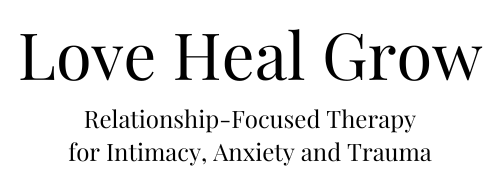
“Trauma” and “anxiety” aren’t just buzzwords– they’re real experiences that profoundly shape individuals’ lives, influencing their thoughts, emotions, behaviors, and physiological responses. And unfortunately, they’re extremely common. The National Institute of Mental Health states that “An estimated 31.1% of U.S. adults experience any anxiety disorder at some time in their lives.” And this number is on the rise; over 60% of Gen Z experiences regular anxiety. Trauma is a little harder to quantify, since people have very different responses to events– what may be traumatic for one person may not be for another. But the National Council for Behavioral Health estimates that as many as 70% of adults in the US– that’s 223.4 million people– have experienced some type of traumatic event in their lives.
What’s even more frustrating is that trauma and anxiety often go hand-in-hand. The two have a complex relationship that can exacerbate each other, creating a vicious cycle of distress and dysfunction. Trauma can lay the groundwork for the development of anxiety disorders, while anxiety, in turn, can amplify the impact of traumatic experiences. This leads to a heightened state of distress and emotional reactivity. Today, let’s explore the importance of addressing both trauma and anxiety simultaneously. Understanding this relationship can help give you the knowledge and power you need for healing.
What Are Trauma And Anxiety?
Trauma, in its various forms, can deeply impact individuals on emotional, psychological, and physiological levels. Whether it stems from childhood experiences, adverse life events, or ongoing exposure to stressors, trauma has the power to reshape one’s perception of safety and security in the world. It disrupts the natural equilibrium of the mind and body, leaving a lasting imprint that can manifest in myriad ways, including anxiety.
Anxiety, characterized by persistent worry, fear, and apprehension, often becomes intertwined with trauma. It can serve as a coping mechanism, a protective shield against perceived threats in the environment. However, when anxiety becomes excessive or overwhelming, it can severely impair daily functioning and diminish overall quality of life.
Understanding the dynamics between trauma and anxiety requires a nuanced perspective. Trauma can act as a catalyst for the development of anxiety disorders, such as generalized anxiety disorder (GAD), post-traumatic stress disorder (PTSD), and panic disorder. Individuals who have experienced trauma may exhibit heightened sensitivity to potential threats, leading to hypervigilance and a heightened emotional response characteristic of anxiety.
Symptoms Of Anxiety and Trauma
Both anxiety and trauma have a number of signs and symptoms– and to make things more complicated, they can have significant overlap. Recognizing the shared symptoms of anxiety and trauma, as well as their unique manifestations, is essential to figure out what’s going on. It’s important for folks experiencing these symptoms to seek support from mental health professionals who can provide the compassionate care and healing interventions tailored to their specific needs.
Symptoms of Anxiety
- Excessive worry or apprehension: Individuals with anxiety often experience persistent, uncontrollable worry about various aspects of their lives, including work, relationships, health, or future events.
- Restlessness: Anxiety can manifest as a constant state of agitation or restlessness, making it difficult for individuals to relax or concentrate on tasks.
- Muscle tension: Anxiety can cause physical symptoms such as muscle tension, stiffness, or aches, particularly in the neck, shoulders, and back.
- Cognitive issues: Anxiety can impair cognitive functioning, causing individuals to have difficulty concentrating, making decisions, or processing information effectively.
- Rapid heartbeat: Anxiety can trigger physical sensations such as a racing heartbeat, palpitations, or chest tightness, as the body responds to perceived threats or stressors.
Symptoms of Trauma
- Intrusive memories or flashbacks: Individuals who have experienced trauma may re-experience distressing memories, nightmares, or flashbacks of the traumatic event, leading to intense emotional distress and physiological arousal.
- Avoidance behaviors: Trauma survivors may avoid reminders of the traumatic event, including places, people, activities, or situations that trigger distressing memories or emotions associated with the trauma.
- Hypervigilance: Trauma can lead to a state of heightened alertness, hypervigilance, and an exaggerated startle response, as the individual remains on high alert for potential threats or danger.
- Negative changes in mood or cognition: Trauma can impact one’s beliefs about themselves, others, and the world, leading to negative changes in mood, such as persistent sadness, guilt, shame, or feelings of detachment from others.
- Emotional numbness or dissociation: Trauma survivors may experience emotional numbing or dissociation, where they feel disconnected from their emotions, body, or surroundings as a way to cope with overwhelming distress.
Overlapping Symptoms
- Hypervigilance: Both anxiety and trauma can lead to a state of hypervigilance, where individuals are constantly on guard, scanning their environment for potential threats or danger.
- Sleep disturbances: Anxiety and trauma can disrupt sleep patterns, leading to difficulty falling asleep, staying asleep, or experiencing restorative sleep. This can lead to fatigue and daytime drowsiness.
- Irritability: Both anxiety and trauma can cause irritability, mood swings, or feelings of agitation, making individuals more reactive or sensitive to stressors in their environment.
- Difficulty concentrating: Anxiety and trauma can impair cognitive functioning, causing individuals to have difficulty concentrating, making decisions, or processing information effectively.
- Physical symptoms: Both anxiety and trauma can manifest in physical symptoms such as muscle tension, headaches, gastrointestinal distress, or other physical issues.
Dealing with Anxiety and Trauma
Recognizing the interconnected nature of trauma and anxiety is an important reflection on the healing journey. While everybody’s journey is unique, there are several approaches that have shown promise in addressing trauma-related anxiety and promoting resilience.
The most important step to recovery is creating a safe and supportive environment. This means surrounding yourself with people who can sympathize with your feelings. It may also mean seeking professional help to process your traumatic experiences and navigate your anxiety. Trauma-informed therapy approaches, such as cognitive-behavioral therapy (CBT), eye movement desensitization and reprocessing (EMDR), and dialectical behavior therapy (DBT), offer valuable tools for managing symptoms. They’ll help you challenge your maladaptive thought patterns and better regulate your emotions.
Self-care is also important to lessen the impact of trauma-linked anxiety. Mindfulness practices, such as meditation, yoga, and deep breathing exercises, can help individuals reconnect with their bodies, regulate their emotions, and cultivate a greater sense of presence and acceptance.
Physical activity, adequate sleep, and nutrition are also integral components of a comprehensive self-care regimen that supports overall well-being and resilience. These can be hard, especially if your trauma or anxiety interfere with your sleep patterns. But it’s worth it to try! Engaging in activities that bring joy and fulfillment, nurturing social connections, and seeking support from trusted individuals are equally important in fostering a sense of belonging and empowerment.
Finally, it’s important to remember that healing from trauma and managing anxiety is not a linear process. It takes patience, self-compassion, and a willingness to confront difficult emotions and memories. It’s okay to seek support and guidance along the way! If you want help in this journey of healing, don’t hesitate to reach out to the trauma-informed therapists at Love Heal Grow. We’re here for you!
























